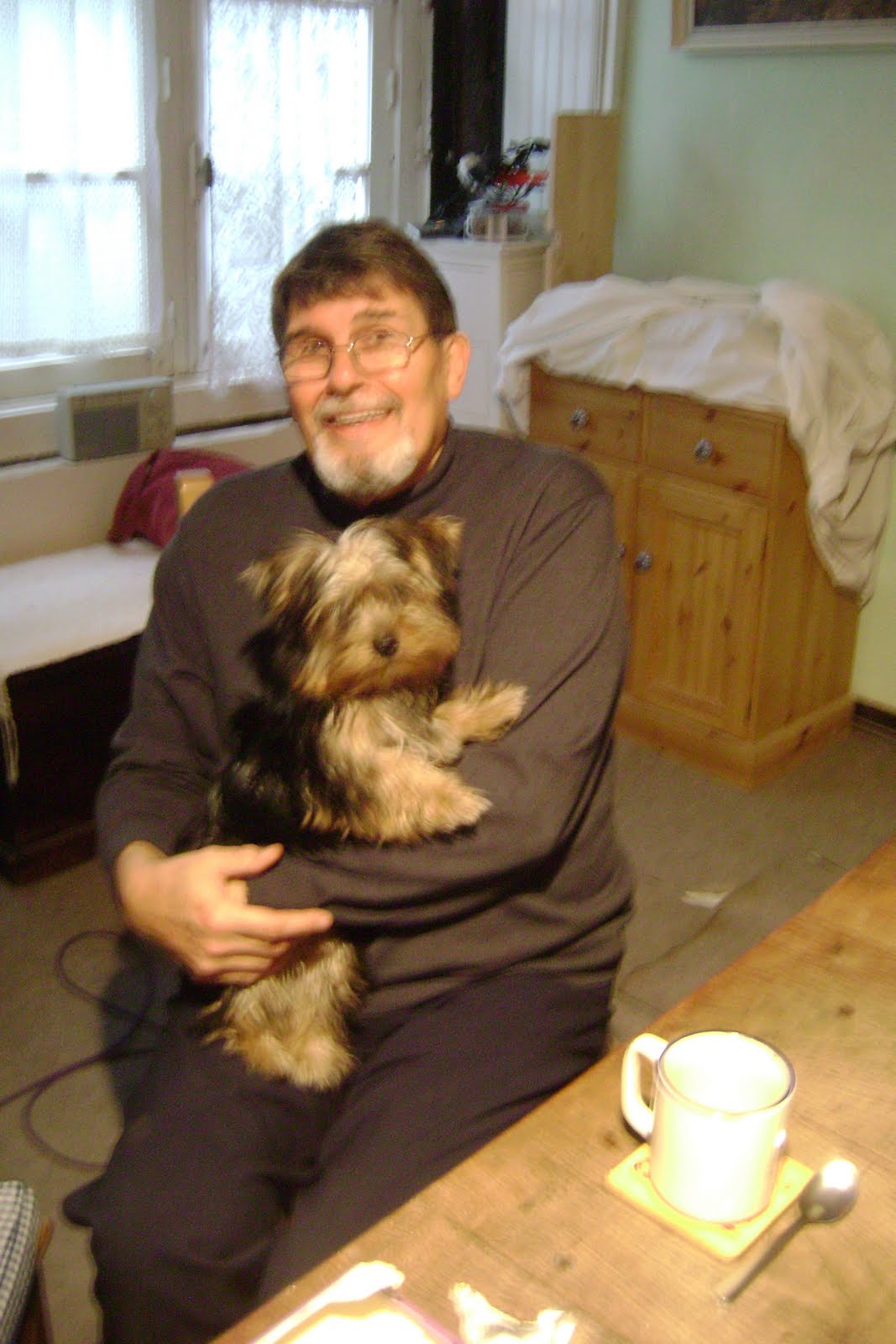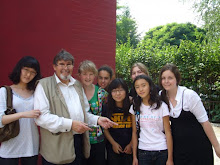
Einstein is an important element of my life. He is seven months old and a true Yorkshire Terrier: stalwart, determined, independent . We have just come back from a long walk through the rimed and sparkling lanes and fields.
On these walks, it is he who decides the itinerary: usually a leisurely beginning, for it is important to sniff every doorstep, every lamp post, every cobbled corner. Then, as we set off along the upper road that leads from the cite along the ridge, the pace begins to quicken. Between the Junior School and the Fire Station, there is a wide grass verge where the houses are set back from the road, and several lime trees stand in an orderly French manner, precisely shaped into regular squares above the bare trunk. Here, some days, time is spent examining each one; however, today, there is only a cursory consideration, and he pulls onwards towards the next goal. This is a pile of grit and shingle that stands beside blocks of black and grey marble. These, belong to the funeral parlour across the road which is conveniently placed; the town cemetary is round the next corner.
Before we get there, though - and we are now beyond the town's boundaries - we have to pass a few cottages where two fox terriers live. The first time we made this walk, when he was just three months old, they hurled themselves at the wooden palings, barking . This startled Einstein who cowered and trembled. Of course, now he is seven months old, he is no longer afraid; but I notice that he always changes the side of me on which he walks at this point, preferring to examine the gutter rather than the fence.
We reach le Croix des Landes which is a cafe/shop at a point where several roads join. The one by which we have approached leads straight on to La Ferte Mace; but, on the right, is a road that comes up from the more modern part of town and a lane that leads to the dechetterie (rubbish dump, I suppose, in English; but really that translation is hardly suitable for such an efficient and hygeinic utility which speaks volumes for the difference between civic efficiency in France and in the UK). We will follow that lane later, but for the present, Einstein wants to go off to the left, along the lane that leads between fields full of rough haired bullocks and grazing cows and one or two beautiful if isolated cottages to a slightly higher road from which we can see the valley of a small tributary of the Varenne and, beyond, the beginning of the rolling hills and grazing, wooded dales of what is known as Suisse Normandie.
He is alert and curious, quite content to be on a long lead and pausing every now and then to glance back and reassure himself that I am there and alright. Sometimes he bounds ahead to a patch of grass -quite undistinguishable to any other patch of grass as far as I can tell - which absorbs him.
The air is crisp, but the sun gives a liveliness to the whole scene. For both of us, the walk has breathed a sense of total contentment.
Once we return home, he promptly curls up and falls into a doze. However, he has an ear cocked for when I go into the kitchen to the biscuit tin.

